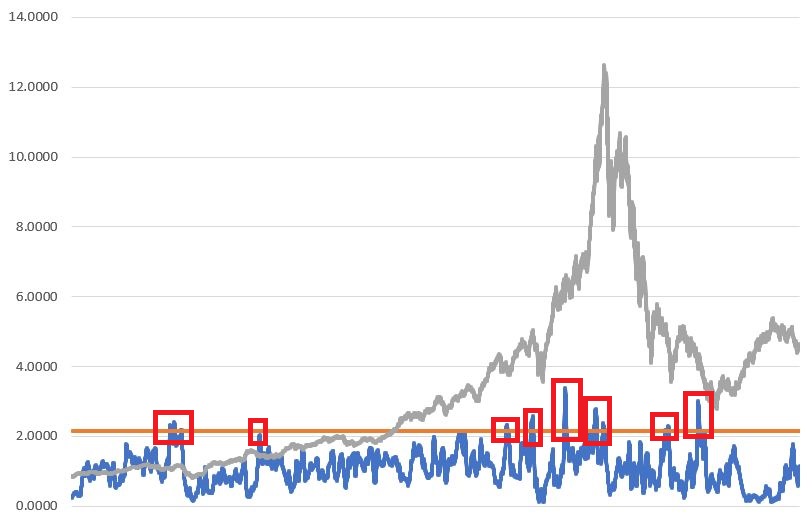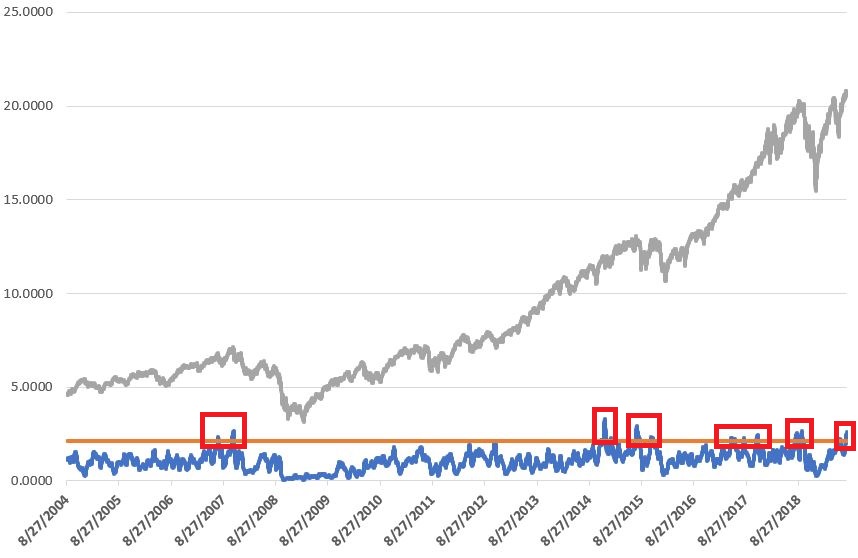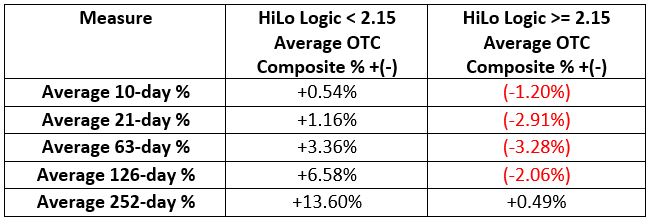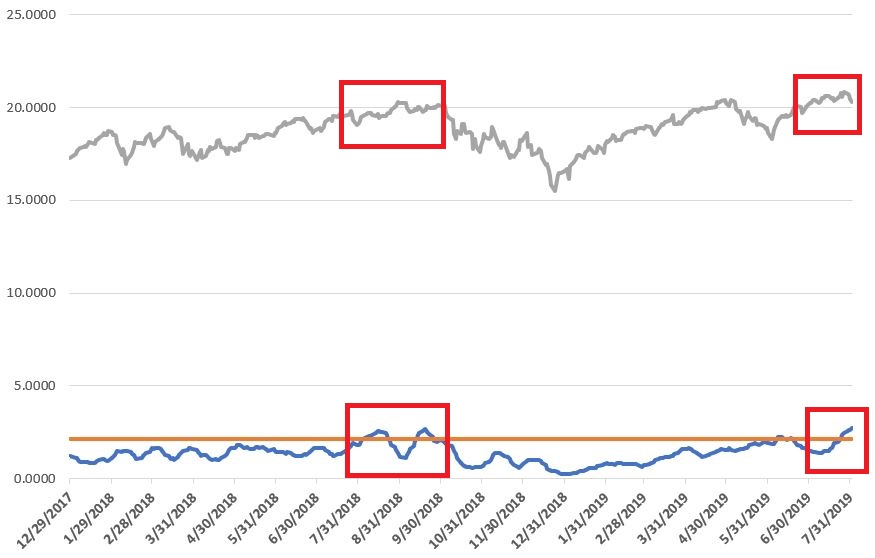I am not going to claim to have “called the top” or anything silly like that. But I for one was not surprised to see the stock market sell-off recently, based almost entirely on the reading of one “venerable” indicator.
The HiLo Logic Index
The HiLo Logic index (heretofore “HLLI”) was first introduced by market legend Norman Fosback (his 1975 book titled “Stock Market Logic” still holds a prominent place in my library. Now for the record, Mr. Fosback introduced the indicator using NYSE data, and for some reason that I can’t recall, somewhere along the way I started following only the Nasdaq version of this indicator. So that is the one I will highlight here.
The HLLI Is Calculated As Follows
In a nutshell, it takes the “lower” of daily new highs and daily new lows and multiplies that value by 100. It then uses a 10-day simple average of those daily readings as the HiLo Logic Index.
For our purposes, a HLLI reading of 2.15 or higher is considered a bearish “warning sign”. The idea is that when both new highs and new lows are relatively high it represents a sign of “churning” in the marketplace – typically a bad sign. Tops in the stock market – even short and intermediate-term ones – are often accompanied by churning in the market, i.e., alot of indecisive action.
Think Of It This Way
The HLLI is a handy way to keep track.
Results
For our purposes we will use the NASDAQ Composite index (which includes all Nasdaq listed stocks) to measure performance. Figure 1 displays the Nasdaq HLLI against the Nasdaq Composite from 1988 into August of 2004. Figure 2 displays the same from August 2004 forward.

Figure 1 Jan 1988-Aug 2004

Figure 2: Aug 2004-Aug 2019

Figure 3 displays the average % gain or loss for the Nasdaq Composite for various time frames based on current readings for the HLLI.
Figure 3 – Average % +(-) following various HLLI readings (1988-2019)

Figure 4 displays the % of time the Nasdaq Composite showed a gain x-days after a given HLLI reading.
Figure 4 – % of times OTC Composite higher following various HLLI readings (1988-2019)
As you can see in Figure 3 and 4 the market has displayed a definite tendency to perform more poorly following a HLLI reading of 2.15 or higher.
As you can see in Figure 5, the HLLI rose to a bearish level in August and September of 2018, warning of the trouble in the 4th quarter of 2018 that took most investors by surprise. The HLLI returned to a bearish level in July of 2019 – just prior to the latest selloff and remained in bearish territory (i.e., above 2.15) after the second day of trading in August 2019.

Figure 5 – OTC Composite with HiLo Logic Index
Summary
As you can see in Figures 1 and 2, a bearish HLLI reading has presaged most severe bear markets as well as periods when a market that had been advancing nicely stops doing so for a meaningful period of time. The reality is that most severe bear markets are presaged by a bearish HLLI reading, HOWEVER, not every bearish HLLI reading presages a severe bear market. 2017 was a major exception to the rule as the HLLI had several periods of bearish readings and the market just kept plowing higher.
Still, the readings in Figures 3 and 4 strongly suggest that a bearish HLLI index should at a minimum cause investor’s to temper their bullishness for at least a little while.
